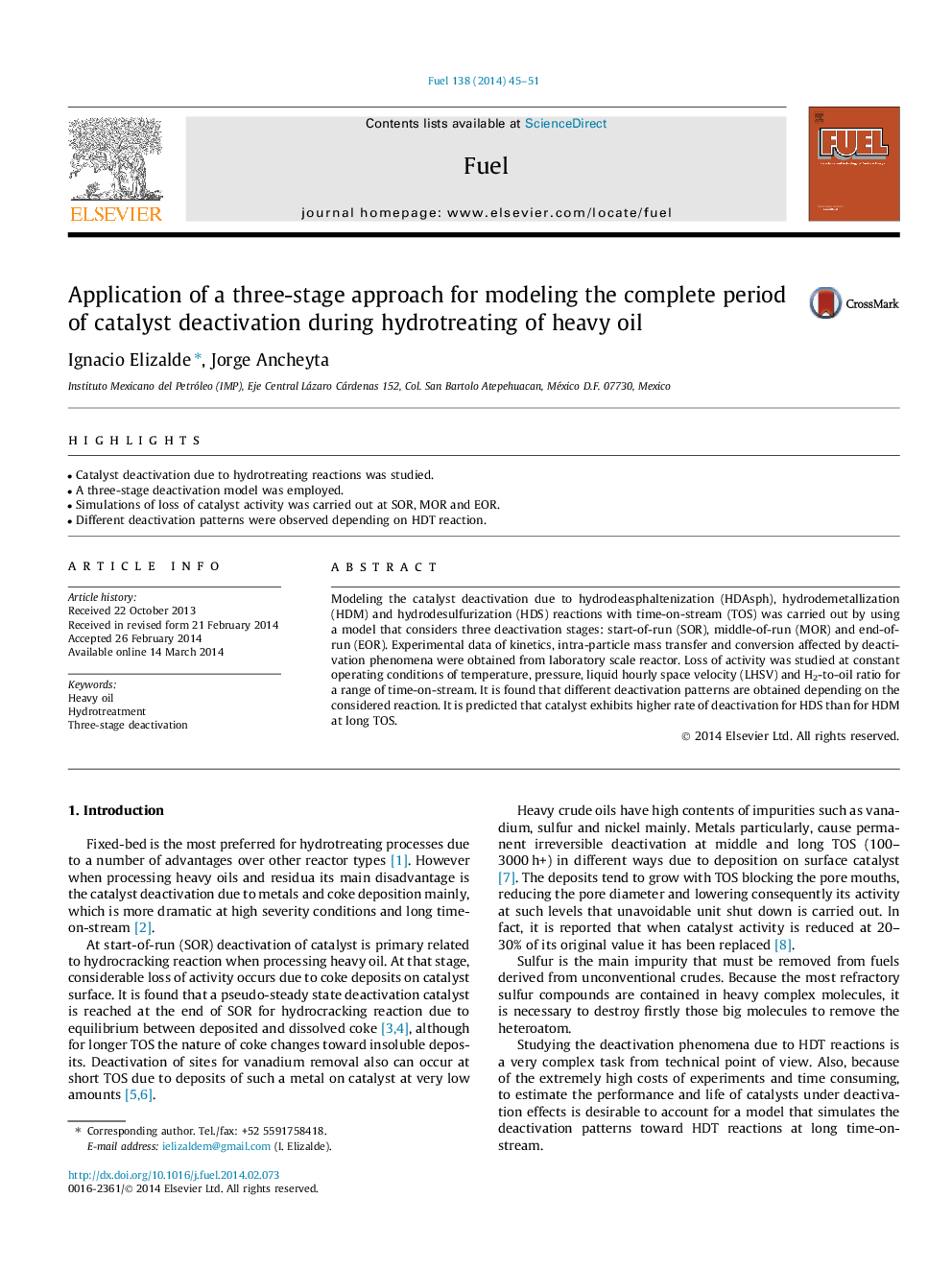| Article ID | Journal | Published Year | Pages | File Type |
|---|---|---|---|---|
| 205995 | Fuel | 2014 | 7 Pages |
•Catalyst deactivation due to hydrotreating reactions was studied.•A three-stage deactivation model was employed.•Simulations of loss of catalyst activity was carried out at SOR, MOR and EOR.•Different deactivation patterns were observed depending on HDT reaction.
Modeling the catalyst deactivation due to hydrodeasphaltenization (HDAsph), hydrodemetallization (HDM) and hydrodesulfurization (HDS) reactions with time-on-stream (TOS) was carried out by using a model that considers three deactivation stages: start-of-run (SOR), middle-of-run (MOR) and end-of-run (EOR). Experimental data of kinetics, intra-particle mass transfer and conversion affected by deactivation phenomena were obtained from laboratory scale reactor. Loss of activity was studied at constant operating conditions of temperature, pressure, liquid hourly space velocity (LHSV) and H2-to-oil ratio for a range of time-on-stream. It is found that different deactivation patterns are obtained depending on the considered reaction. It is predicted that catalyst exhibits higher rate of deactivation for HDS than for HDM at long TOS.
